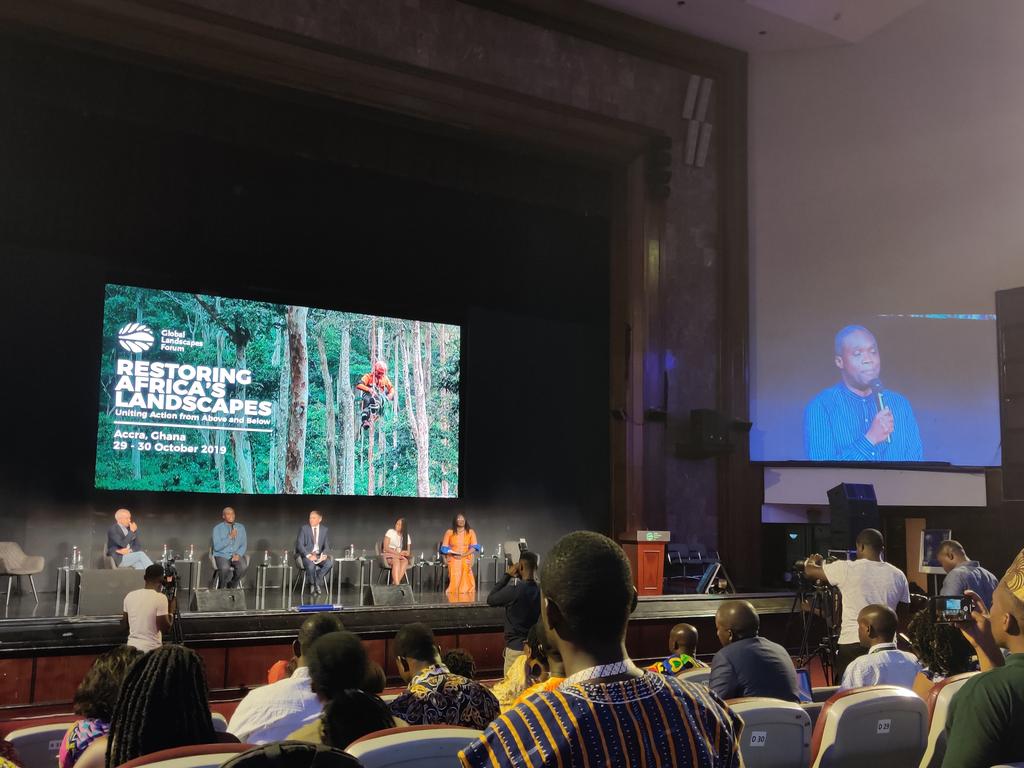
By Kofi Adu Domfeh
One of the biggest challenges the planet face today is the earth drying up.
This concern has given rise to voices clamouring for a green revolution of innovative initiatives and solutions to halt the rate of global warming.
Vegetations hold the solution to reverse the climate change phenomenon – with more shrub, grass and tree cover on degraded lands and farmlands, biomass carbon is increased and the land is conserved for higher farm productivity and incomes.
The African Union Development Agency (AUDA-NEPAD) is spearheading the African Forest Landscape Restoration Initiative (AFR100) to bring 100 million hectares of land into restoration by 2030.
The Initiative has 28 African countries pledging commitments to attain the goal of enhancing food security, increasing climate change resilience and mitigation, and combating rural poverty.
According to Mamadou Diakhite of AUDA-NEPAD, the goal is to empower communities to turn degraded lands into healthy forests.
He however emphasized that “forest landscape restoration is more than just planting trees… It is about restoring lands, lives and livelihoods”.
The AFR100 contributes to the Bonn Challenge, the New York Declaration on Forests and the Sustainable Development Goal 15: protect, restore and promote sustainable use of terrestrial ecosystems, sustainably manage forests, combat desertification, halt and reverse land degradation and halt biodiversity loss.
Ghana’s Achimota Forest Reserve Enrichment
Ghana’s Forestry Commission is hoping to rake in more revenue from its enrichment plantation within the Achimota Forest Reserve, an open coastal savanna vegetation of shrubs.
Situated in the heart of the city of Accra, the forest was established in 1930 to create greenery around the Achimota School to prevent pollution and provide fuelwood for the school.
But the area has been subjected to excessive degradation and threats of illegal settlements.
Today, the 320 hectare reserve is home to the Accra Zoo and an abode for several religious and social activities include camping, photo and video shoots, recreation, picnics and hiking.
In its current state, the reserve generates a daily average revenue of Gh3,000 ($550), creating employment and other income-generating activities for people – the revenue is mainly from fees charged visitors to the park and the zoo.
To increase the potentials of the landscape to enhance livelihoods, the Forestry Commission has embarked on an enrichment plantation of 200 hectares to boost the ambition to create an eco-tourism destination and a learning enclave of tree species.
The Achimota Forest already has 30 different types of mushrooms and eight types of fruits.
“We’re looking at multi-story forest of exotic and indigenous tree species,” says Edith Ansah, a Director at the Commission.
Restoring Landscapes is About Restoring Integrity
Ecosystem restoration is fundamental to achieving the Sustainable Development Goals, mainly those on climate change, poverty eradication, food security, water supply and biodiversity conservation.
For Wanjira Mathai, Senior Advisor at the World Resources Institute (WRI), restoration is more about agro forestry, agro ecological systems, farmer-managed restoration and many other techniques of protecting water bodies, producing food and securing livelihoods.
“Restoring landscapes is about restoring integrity to the demands of the landscape,” she noted.
The UN Decade on Ecosystem Restoration (2021 – 2030), declared by the UN General Assembly, aims to massively scale up the restoration of degraded and destroyed ecosystems.
The Decade will accelerate existing global restoration goals, including the Bonn Challenge which aims to restore 350 million hectares of degraded ecosystems by 2030.
The African Forest Landscape Restoration Initiative is the single ambitious target for restoration efforts on the continent to shield people and communities from the devastation impacts of climate change.











